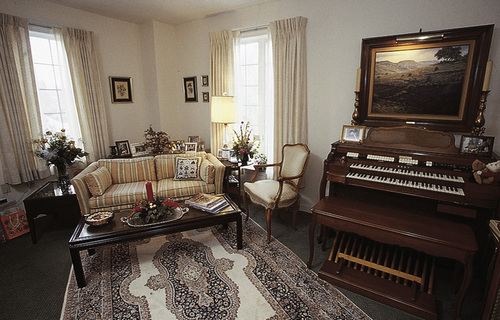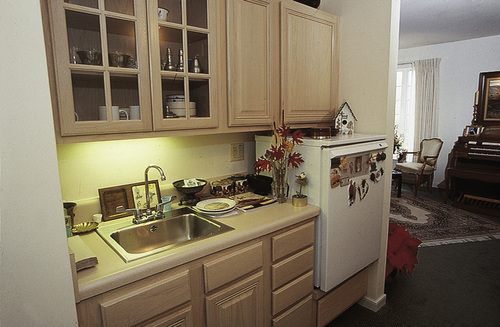Assisted Living
Objectives
• Define the key terms and key abbreviations in this chapter.
• Describe the purpose of assisted living.
• Describe assisted living residents and their rights.
• Identify the types of assisted living residences and the living areas offered.
• Describe requirements and features of assisted living units.
• Describe the requirements for assisted living staff.
• Describe the usual needs and abilities of assisted living residents.
• Describe an assisted living service plan.
• Explain how to safely assist with meals, housekeeping, and laundry.
• Explain how to assist with drugs.
• Identify the reasons for transferring, discharging, or evicting a person.
• Explain how to promote PRIDE in the person, the family, and yourself.
Key Abbreviations
Many older people cannot or do not want to live alone. Some need help with self-care or taking drugs. Some have physical or cognitive problems and disabilities. Assisted living is a housing option for older persons who need help with activities of daily living (ADL) but do not need constant care.
Assisted living residences (ALRs) offer quality of life with independence, companionship, and social involvement. A home-like setting is provided.
ALRs may be part of a retirement community, nursing center, senior citizen housing, or a stand-alone facility. Licensing requirements and residents’ rights vary from state to state.
See Promoting Safety and Comfort: Assisted Living.
Assisted Living Residents
Assisted living residents do not have complex medical problems and do not need 24-hour nursing care. However, they usually need some help with 1 or more ADL.
Mobility is often a requirement. The person walks or uses a wheelchair or motor scooter. The person is able to leave the building in an emergency. Stable health also is required. Only limited health care or treatment is needed.
Resident Rights
ALR residents have rights and liberties as United States citizens. They also gain special rights under state laws and rules (Box 53-1) for ALRs. Such rights are similar to those in Chapter 2. If unable to exercise his or her rights, family members, legal representatives, or ombudsmen act on the person’s behalf.
ALR Services and Living Areas
Assisted living residences usually offer:
• Help with ADL—bathing, dressing, grooming, toileting, eating, walking
• Housekeeping, laundry, and maintenance
• A 24-hour communications system for an emergency or to call for help
• 24-hour security and supervision
• Social, educational, recreational, and spiritual services
• Help with shopping, banking, and money management
• Exercise and wellness programs
• Medication (drug) management or help taking drugs
• Supervision for persons with Alzheimer’s disease (AD), dementia, or other disabilities
Living areas vary. A small apartment has a bedroom, bathroom, living area, kitchen, and laundry areas (Figs. 53-1 and 53-2). Some people just want a bedroom and bathroom. Box 53-2, p. 824 lists the requirements and features of assisted living units.


See Focus on Long-Term Care and Home Care: ALR Services and Living Areas, p. 824.



